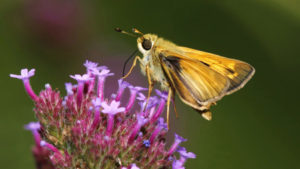April Horticulture News
go.ncsu.edu/readext?595980
en Español / em Português
El inglés es el idioma de control de esta página. En la medida en que haya algún conflicto entre la traducción al inglés y la traducción, el inglés prevalece.
Al hacer clic en el enlace de traducción se activa un servicio de traducción gratuito para convertir la página al español. Al igual que con cualquier traducción por Internet, la conversión no es sensible al contexto y puede que no traduzca el texto en su significado original. NC State Extension no garantiza la exactitud del texto traducido. Por favor, tenga en cuenta que algunas aplicaciones y/o servicios pueden no funcionar como se espera cuando se traducen.
Português
Inglês é o idioma de controle desta página. Na medida que haja algum conflito entre o texto original em Inglês e a tradução, o Inglês prevalece.
Ao clicar no link de tradução, um serviço gratuito de tradução será ativado para converter a página para o Português. Como em qualquer tradução pela internet, a conversão não é sensivel ao contexto e pode não ocorrer a tradução para o significado orginal. O serviço de Extensão da Carolina do Norte (NC State Extension) não garante a exatidão do texto traduzido. Por favor, observe que algumas funções ou serviços podem não funcionar como esperado após a tradução.
English
English is the controlling language of this page. To the extent there is any conflict between the English text and the translation, English controls.
Clicking on the translation link activates a free translation service to convert the page to Spanish. As with any Internet translation, the conversion is not context-sensitive and may not translate the text to its original meaning. NC State Extension does not guarantee the accuracy of the translated text. Please note that some applications and/or services may not function as expected when translated.
Collapse ▲Controlling English Ivy in Urban Landscapes
Introduction
English ivy (Hedera helix) is a shade-tolerant, woody perennial vine. When established it creates a dense ground cover with attractive dark green foliage. But, left un-checked this introduced plant invades woodlands, climbs (and kills) trees and is considered an invasive species. Pursuing the internet you can find several “recommendations” for controlling English Ivy. Some good, some are questionable.
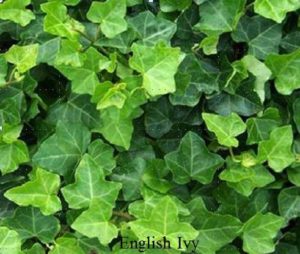
Attribution: J.Neal CC BY – 4.0
Non-Chemical Control
Culturally, this plant is difficult to control.
- English ivy can be controlled with mowing. But the mowing must be frequent (like mowing a lawn) and you must mow the entire infestation to “starve-out” the plants.
- Pull it up. There are several on-line videos demonstrating how to “roll up” the English ivy vines. Cutting the vines into sections, and then cutting the vines where attached to the roots. This will be a very labor-intensive effort. But, if you put enough effort and hours into it, most any weed can be removed by hand. Many vines will grow back from the roots, so return to the site regularly to remove re-growth.
- Remove it from the trees. English ivy in trees can be killed by cutting the stems at the ground and removing the vines from the tree as high as you can easily reach. The remaining vines in the tree will die and eventually fall off.
What about herbicides?
Again, if you look on-line, there are many reports and recommendations – some good, some not so good. One of the most commonly recommended herbicide treatments is triclopyr. But, in my experience triclopyr is less effective than glyphosate. What does the research show?
1. Timing Makes a difference.
For best results, apply glyphosate in the spring when English ivy has 2 to 4 new leaves. Retreat about 6 weeks later if you see re-growth. English ivy becomes less and less susceptible to glyphosate as the season progresses. Control in mid summer can be improved by mowing the ivy, then spraying the regrowth.
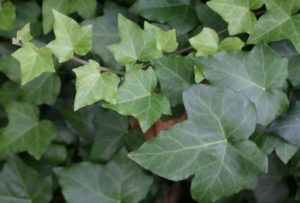
English ivy new growth. The best time to apply glyphosate for control. Attribution: J.Neal CC BY – 4.0
2. The Formulation does matter
All our research was done with the Roundup brand formulations. Even within the Roundup family of products, we saw differences in control. You will likely get poorer control with “generic” formulations. Also, DO NOT USE the fast acting formulations. Weed control will be poorer if you burn the leaves off before the herbicide can move to the stems and roots. Diluted, ready-to-use formulations will be less effective. Purchase a formulation that is >41% active ingredient and dilute it for treatment (see dosing guideline below).
3. There is a clear dose response.
Glyphosate applied at 4 lb/A is much better than glyphosate applied at 2 lb /A. See photos below from our 2009 experiment. If you want to kill English ivy, use the full labeled rate of glyphosate. For the common 41% active ingredient formulation, I recommend a 4% solution by volume (that’s 5.1 ounces of herbicide in one gallon of spray mix).
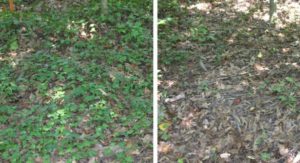
Glyphosate at 4 lb/A (Right) worked better than 2 lb/A (Left) Treated in spring, photo in August 2009. Attribution: J. Neal CC BY – 4.0
4. Options other than glyphosate?
Several herbicides will damage English ivy but most are not as effective as glyphosate. Dr. Jeff Derr of Virginia Tech reported two applications of 2,4-D amine at 1 lbai/A to actively growing English ivy provided complete control. Dr. Derr also observed that triclopyr was less effective compared to glyphosate or 2,4-D.
Keep it from returning
Regardless of the control method chosen, this is a woody perennial vine that can return from small stem segments. It is also spread by seed. So, return to the site frequently to remove any newly emerged ivy plants. With persistence you can get rid of this pesky weed.
Author: Joe Neal
Professor of Weed Science, Extension Specialist & Department Extension Leader
Horticultural Science
While it hasn’t quite reached the widespread popularity of bird watching, butterfly watching has gained significant favor in recent years. Butterflies are colorful, diverse, abundant and active during the day in warm months, making them an ideal pursuit for wildlife enthusiasts. In fact, wildlife watching as a whole, given impetus by the increased awareness of regional and ecological diversity, has become one of the country’s fastest-growing outdoor recreational activities.
Beauty in Flight
Butterflies in Your Backyard is a quick guide from NC State Extension that explores common butterflies in North Carolina and how to attract them to your garden.
How do I Start a Butterfly Garden?
We’re glad you asked!
North Carolina’s diverse natural landscape includes coastal dunes, pocosins, Sandhill savannahs, Piedmont forests, wetlands and mountain ranges. These different vegetation communities provide a home for more than 175 butterfly species.
Butterflies and caterpillars (the larval stage in the butterfly life cycle) provide food for birds and other organisms, pollinate flowers and are easy to attract to a garden or backyard landscape. Butterflies are found throughout North Carolina and will flourish within a well-designed landscape of native plants in both rural and urban areas.
How to Grow Baptisia in Your Garden
A member of the pea family, Baptisia is a flowering, native North Carolina plant. Easy to grow and deer resistant, Baptisia also comes in a variety of colors. Once established, it’s virtually maintenance-free and drought tolerant.
Some Baptisia species are also known as false indigo. Native Americans, and later European settlers, once used Baptisia as a source of blue dye.
Baptisia Quick Facts
• Perennial flowering plant native to North Carolina
• Available in several color varieties
• Low maintenance
• Deer resistant and drought tolerant
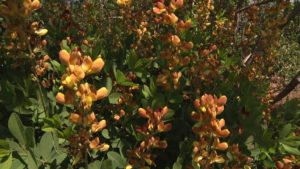
A flowering Baptisia plant.
More Gardening Resources
NC State Extension Plants Database
NC State Extension Gardening website
NC State Extension Gardening Publications and Fact Sheets
The North Carolina Extension Gardener Handbook
What’s that purple weed?
Questions abound each spring about what the purple weed is that appears in the landscape this time of year. It is probably either purple deadnettle (Lamium purpureum) or henbit (Lamium amplexicaule).
These weeds often get confused because they look similar. They both belong to the mint family, have square stems, have an ascending growth habit, opposite leaves, purple/pink flowers, and are winter annuals. When trying to identify if you have purple deadnettle or henbit, key ID traits to tell them apart are listed below.
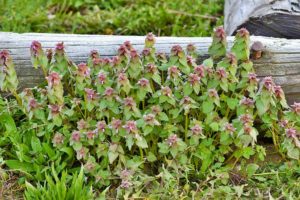
Key ID traits for purple deadnettle:
• Purple-tinged leaves on upper stem triangular with pointed tips
• Upper leaves with petioles, not directly attached to stem
Henbit (below) may look similar to purple deadnettle, but there are some key ID traits to look for to tell these weeds apart.
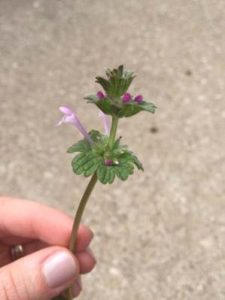
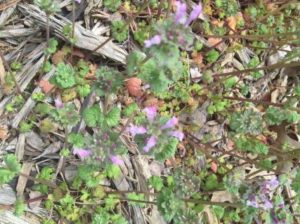
Key ID traits for henbit:
• Leaves rounded with deep lobes and venation on upper stem
• Upper leaves directly attached to stem with no petioles
• Densely pubescent (hairy) leaves
Both of these weeds are winter annuals meaning they grow, reproduce, and then fade away as warm weather sets in. Preventing seed production is key to management. Tillage and herbicides are effective management options for these weeds. Both species are flowering now and management with herbicides will not likely result in full control. Fall or early spring herbicide applications will be most effective at managing problem infestations. Please contact us with any questions.
Additional Resources:
Purple Deadnettle:
• NC State Extension Deadnettle Resources
• Clemson University Deadnettle Resources
Henbit:
Homegrown: Tips for Starting a Container Garden





